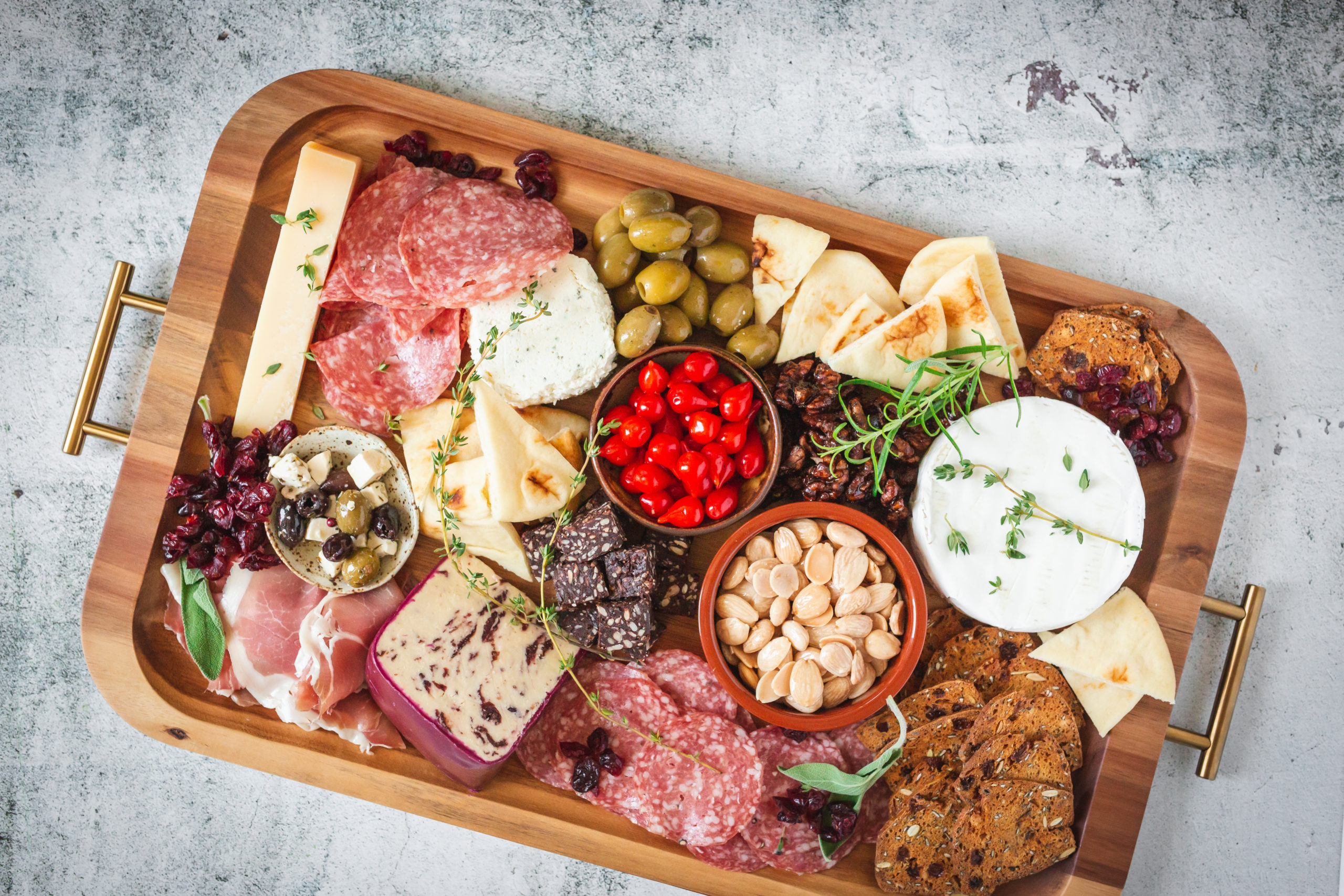We’ve all seen pictures of elaborate charcuterie boards online (hello Pinterest and food bloggers!). These deliciously arranged boards that are often curated for professional websites, and maybe even your best friend’s Instagram, can make the idea of creating your own feel intimidating. But luckily, putting together a visually appealing yet simple charcuterie board, that is equally as delicious, is well within reach.
With just a few basic pairing rules to serve as your compass, it can actually be pretty easy to put together your own photo-worthy board. Use these tips to kickstart your creativity and make your next charcuterie board truly unique — and Instagram worthy! Hint: the key is to choose quality meats and cheeses that vary in both flavor and texture.
Tips for Putting Together a Delicious and Simple Charcuterie Board
Step 1: Start with the Cheese
You can’t have a charcuterie board without one of its main components — the cheese! There are hundreds of different types of cheese available, so finding the perfect variety is often overwhelming. The best approach to take is to focus on good cheese that also tastes delicious. Quality takes precedence over price, so feel free to scour your local supermarkets for fresh options. A good rule of thumb, especially if you are hosting a party, is to showcase:
- A crowd favorite cheese everyone is familiar with so they can enjoy what they know they love if taking a risk isn’t something they’re up for.
- A wildcard cheese most people likely haven’t tried for those who are feeling adventurous (and to make you look like you have some serious cheese knowledge).
- A healthy mix of hard, creamy, sharp, and mild to give the tasting experience a healthy blend of textures and flavors.
You can’t go wrong with Asiago, Parmesan, and Romano cheese for hard options, and Mascarpone, Brie, and goat cheese for your soft options. These fan favorites are sure to please and pair well with most charcuterie meats. For your wild card, try something that’s bursting with unique flavor like a rubbed fontal or our unique Copper Kettle Parmesan.
Step 2: Bring in the Meats
Next, you’ll want to find the perfect meats to complement your cheese selections. Pairing meats and cheese are fairly simple, and simple charcuterie boards are a great way to experiment with what you like. Here is a simple breakdown of the meats that pair well with some of the cheeses listed above:
- Asiago and Salami
- Parmesan and Prosciutto
- Romano and Capicola
- Mascarpone and Pepperoni
- Brie and Sopressa
- Goat Cheese and Cured Sausage
Of course, these selections are only jumping off points to get you started on your charcuterie creation journey. Feel free to experiment with different pairings and see what works for you. A few additional tips for creating your own pairings though:
- If the meat is spicy, salty, or smoky, go for a milder cheese to highlight and balance those strong flavor profiles. While similar profiles pair well together when it comes to pairing cheese with drinks like wine and beer, that same concept can prove too overwhelming to the palate with meats and cheeses.
- Try to go for contrast with your textures as well. A soft, smooth cheese paired with an equally soft, fatty meat is going to result in a lackluster tasting experience.
Step 3: Add on the Extras
After you’ve established the main characters of your simple charcuterie board, it’s time to bring in the supporting actors. These accompaniments can range anywhere from various nuts and crackers, to honey, jam, or dark chocolate, M&Ms, or even pickles. You can really elevate the flavor of your cheese by adding various textures and a combination of sweet and salty flavor elements.
You can really have some fun trying different things here. For appearance purposes, sprinkle these supplementary flavors throughout the board, placing them in between your meats and cheese in order to separate the two visually and add some color.
If you want some more detailed recommendations on adding extras to your board, grab our Creating the Perfect Cheese Board eBook here.
P.S. Don’t Forget the Drinks
Wine and charcuterie boards go together like milk and cookies, so go the extra mile and grab a few bottles! After your board is complete and ready for presentation, you’ll want to pair it with the perfect wine. Since the possibilities are endless, you can keep it simple by sticking with universal wines that complement most cheeses. If you are a white wine drinker, you can’t go wrong with either Chardonnay or Sauvignon Blanc. The Sauvignon Blanc is especially delicious when paired alongside goat cheese or cheddar thanks to the high acidity and sharpness of both.
If you’re more of a red wine drinker, Merlot and Pinot Noir are standard crowd pleasers. Both of these wines are traditionally very fruity and can act in place of your jam or dried figs if you choose not to include those on your board. And if wine isn’t your thing at all, go with beer!
The bottom line is, don’t let the presentation of a fancy board discourage you from creating your own delicious and simple charcuterie board. With just a few key elements to keep in mind and a little bit of creative vision, making your own amazing board is easy, fun, and a favorite at any event.
Want a little more guidance and a little less DIY for creating your next board? We break down everything you need to know in our downloadable eBook, “Creating the Perfect Cheese Board in 9 Easy Steps.”
If you’re always looking to impress your friends and family with your cheese expertise, sign up for our monthly newsletter to get our latest articles and advice straight to your inbox.





